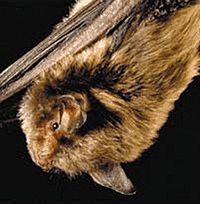
Photo from wikipedia
Exogenously applied double-stranded RNA (dsRNA) can induce potent host specific gene knockdown and mortality in insects. The deployment of RNA-interference (RNAi) technologies for pest suppression is gaining traction in both… Click to show full abstract
Exogenously applied double-stranded RNA (dsRNA) can induce potent host specific gene knockdown and mortality in insects. The deployment of RNA-interference (RNAi) technologies for pest suppression is gaining traction in both agriculture and horticulture, but its implementation in forest systems is lagging. While numerous forest pests have demonstrated susceptibility to RNAi mediated gene silencing, including the southern pine beetle (SPB), Dendroctonus frontalis, multiple barriers stand between laboratory screening and real-world deployment. One such barrier is dsRNA delivery. One possible delivery method is through host plants, but an understanding of exogenous dsRNA movement through plant tissues is essential. Therefore, we sought to understand the translocation and persistence of dsRNAs designed for SPB throughout woody plant tissues after hydroponic exposure. Loblolly pine, Pinus taeda, seedlings were exposed to dsRNAs as a root soak, followed by destructive sampling. Total RNA was extracted from different tissue types including root, stem, crown, needle, and meristem, after which gel electrophoresis confirmed the recovery of the exogenous dsRNAs, which were further verified using Sanger sequencing. Both techniques confirmed the presence of the exogenously applied target dsRNAs in each tissue type after 1, 3, 5, and 7 d of dsRNA exposure. These findings suggest that root drench applications of exogenous dsRNAs could provide a viable delivery route for RNAi technology designed to combat tree feeding pests.
Journal Title: International Journal of Molecular Sciences
Year Published: 2022
Link to full text (if available)
Share on Social Media: Sign Up to like & get
recommendations!